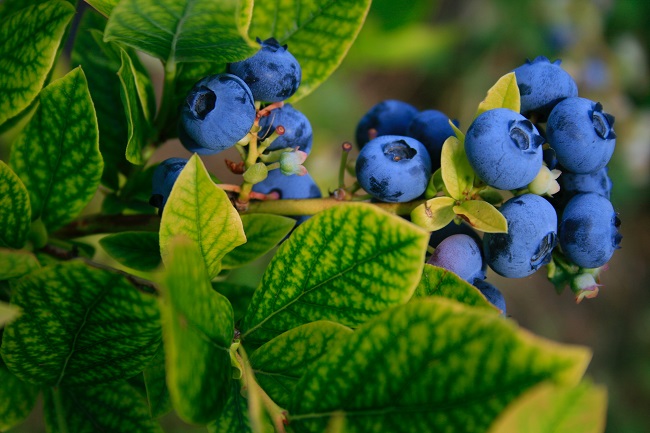
Blueberry bushes are not only delicious but also fascinating plants with some interesting facts. Enjoy these fun facts about blueberry bushes:
Native to North America: Blueberries are native to North America, and they have a long history of being cultivated and enjoyed by Indigenous peoples before becoming a popular commercial crop.
Three Main Varieties: There are three main types of blueberries: highbush, lowbush, and rabbit eye. Highbush blueberries are the most cultivated for commercial production.
Healthy Fruit: Blueberries are often considered a superfood due to their high antioxidant content and numerous health benefits. They are low in calories and rich in vitamins, especially vitamin C and vitamin K.
Low in Calories: A cup of fresh blueberries contains only about 84 calories, making them a guilt-free snack.
Color Change: Blueberry bushes have red or green leaves in the spring and summer, but they turn brilliant shades of red, orange, and yellow in the fall, adding to their ornamental value.
Self-Pollinating: Most blueberry varieties are self-pollinating, which means they can produce fruit with just one bush. However, having multiple bushes can increase the yield.
White Blueberries: There is a rare variety of blueberries called “white blueberries” or “snowberries.” These berries are not truly white but have a pale, translucent color when ripe.
Blueberry Capital: The town of Hammonton in New Jersey is often referred to as the “Blueberry Capital of the World” because it is one of the largest blueberry-producing regions in the United States.
Blueberry Pie: Blueberry pie is a popular dessert in the United States, and it’s often associated with summertime and patriotic celebrations like the Fourth of July.
Long Lifespan: Blueberry bushes can live for many years and continue to produce fruit for decades if properly cared for.
Wild Blueberries: Wild blueberries, which are smaller and have a more intense flavor than cultivated varieties, can be found growing naturally in certain regions, such as the northeastern United States and parts of Canada.
Cross-Pollination: While blueberries are mostly self-pollinating, they can benefit from cross-pollination, which can increase fruit size and yield. Planting different blueberry varieties near each other can help with cross-pollination.
Soil Preferences: Blueberries prefer acidic soil with a pH between 4.5 and 5.5. It’s essential to ensure the right soil conditions for healthy plant growth and fruit production.
Wildlife Attraction: Blueberry bushes are a favorite of many wildlife species, including birds, so it’s common for gardeners to use nets or other methods to protect the fruit from being eaten by animals.
Cultural Significance: Blueberries have cultural significance in some Native American tribes, where they are used in traditional ceremonies and rituals.
Whether you’re growing blueberries in your backyard or enjoying them in your favorite dishes, these fun facts add to the appreciation of this delicious and versatile fruit.
Related Articles & Free Email Newsletter Sign Up
Cultivating Avocado Trees: A Guide to Successful Homegrown Avocado Farming
How to Grow Lime Trees in Your Home or Greenhouse




Comment here